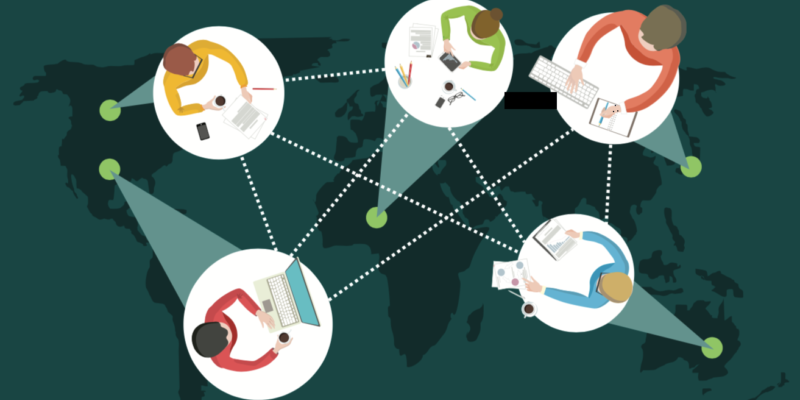

The future of remote work

Gone are the days when remote work was just a fascinating anomaly–barely heard of and rarely practiced by most organizations. The landscape has changed. The future of remote work
How remote work has evolved
There was a time when working from home as the modern workforce knows it wasn’t even a possibility. If your colleagues and business partners wanted to get in touch with you when you were out of the office, they couldn’t email, text or instant-message you. You would’ve needed to provide an alternate phone number (or pager or fax number) and communicate that way. And full-time “remote” positions were different from what they are today.
One of the most helpful technologies for seamless remote work is videoconferencing. Live video feeds help out-of-office workers see and speak to one another in real time, anywhere they are, which is the next best thing to a face-to-face meeting. But this capability wouldn’t be possible without the widespread broadband internet adoption of the past 10 to 15 years.
The current state of remote work

Because of these advances in communication technology and internet access, teleworking has become a fairly accepted practice in many offices, both in the U.S. and globally. This type of work isn’t done entirely from home either. Remote workers turn to coffee shops or coworking spaces, and some even travel the world while maintaining their career goals.
However, we are still seeing some resistance from companies across the board. Many are unwilling to adapt to this arrangement, while others allow remote work just once or twice a week, or as an exception for a few employees.
On the other hand, this saves companies money while allowing workers the freedom to create their own schedules and work from wherever they please. It can be a win-win situation.
What the future holds

As the workforce becomes more progressive, virtual tools, like mobile remote-working tools and virtual reality conferencing, will become the preferred form of communication, even over face-to-face meetings. AI will also likely play a major role in managing remote staff.
Keeping these advancements in mind might put companies at ease. The transition into managing a remote workforce can seem daunting, but with the right tech and hardworking employees, it can be a seamless process – and fighting the change may do more harm than good.
What are your thoughts about remote work?

